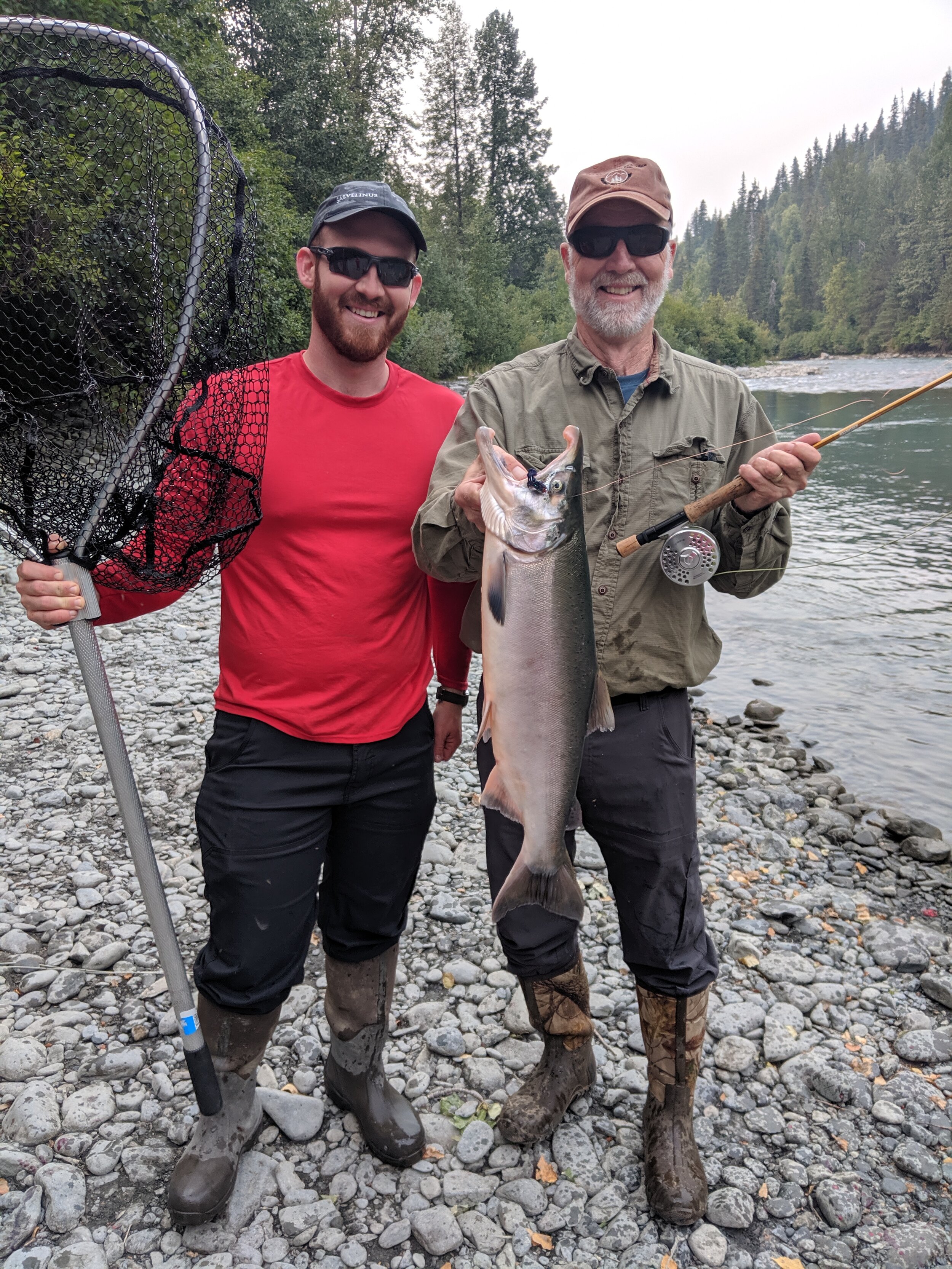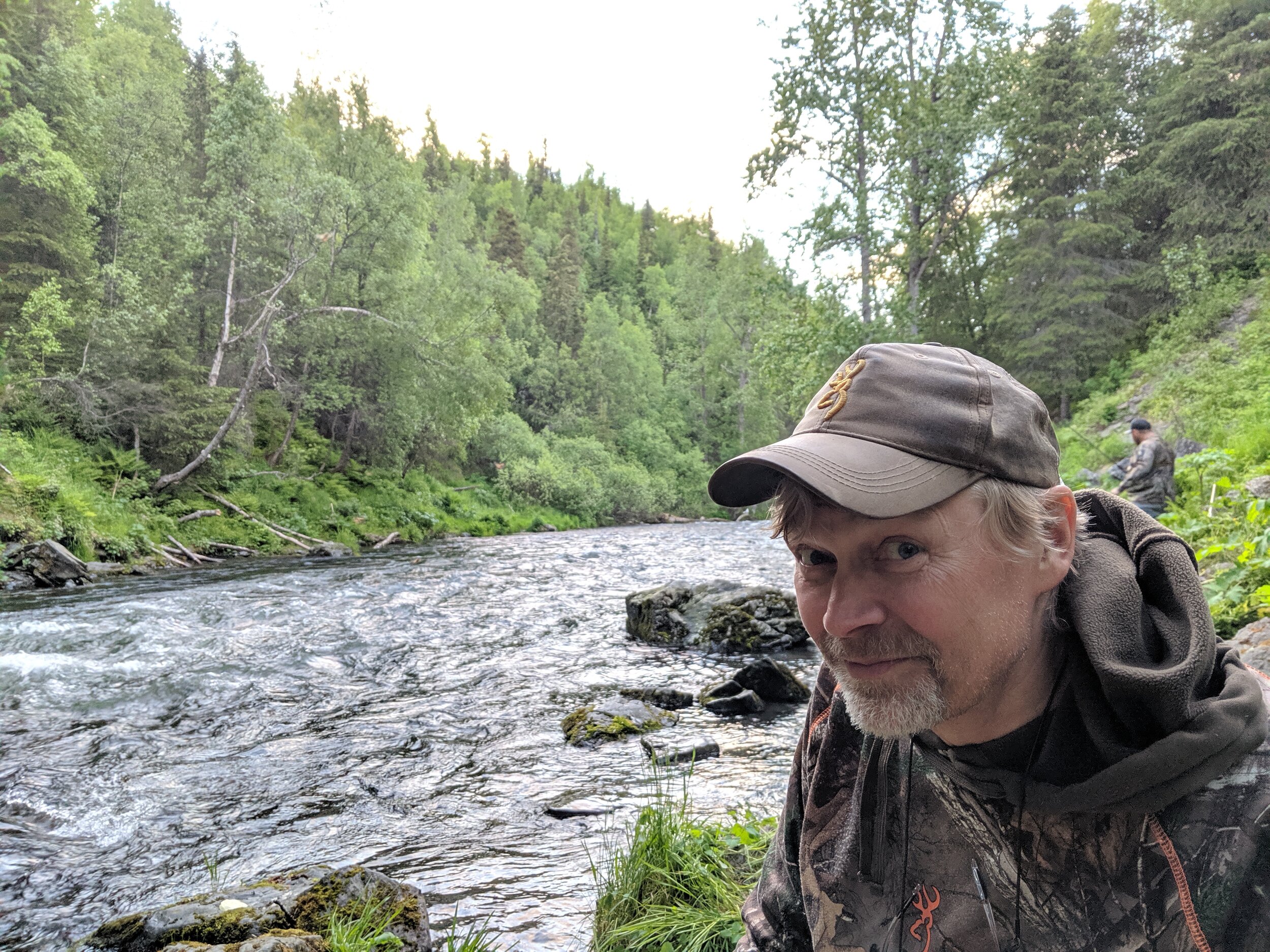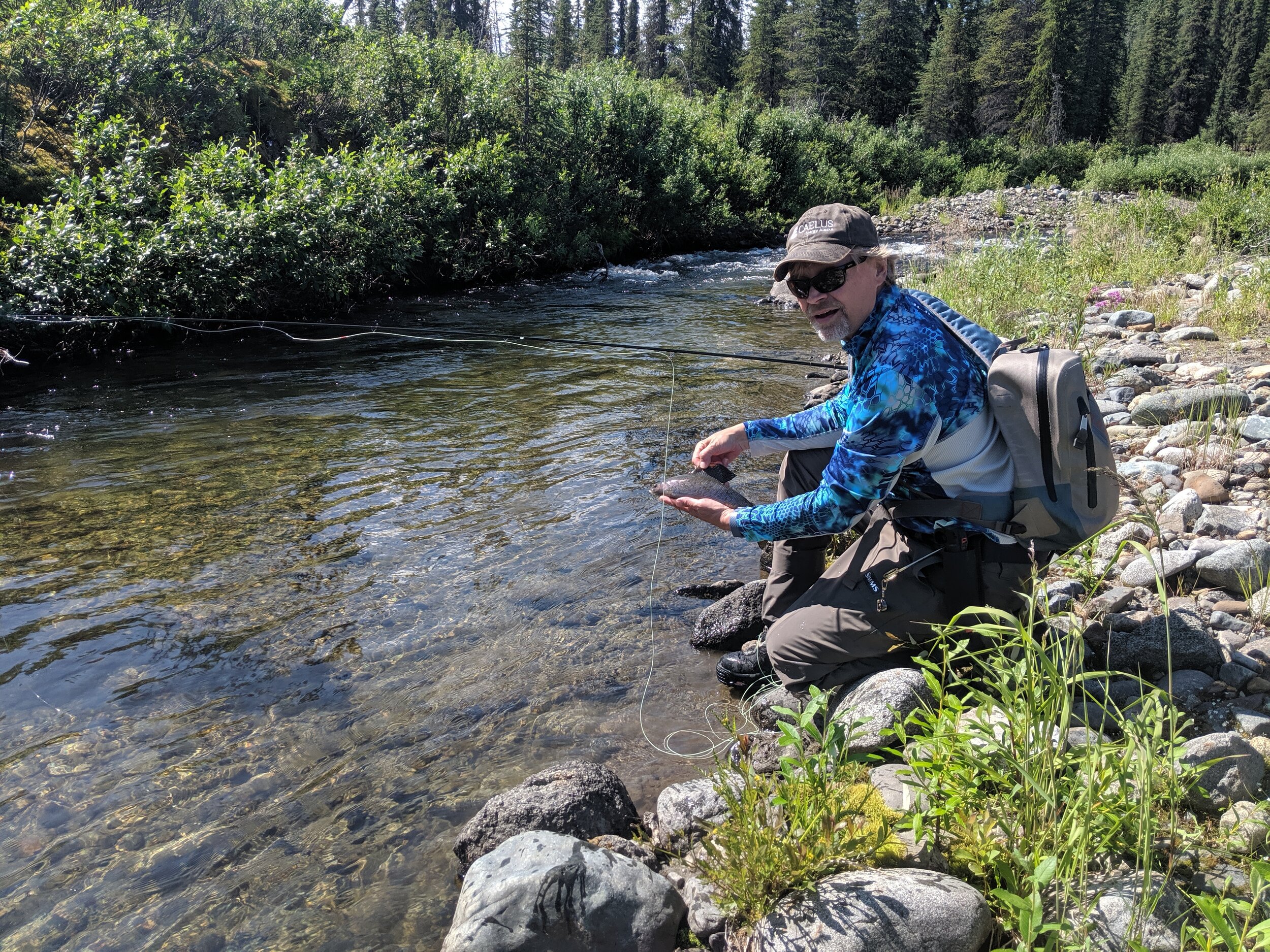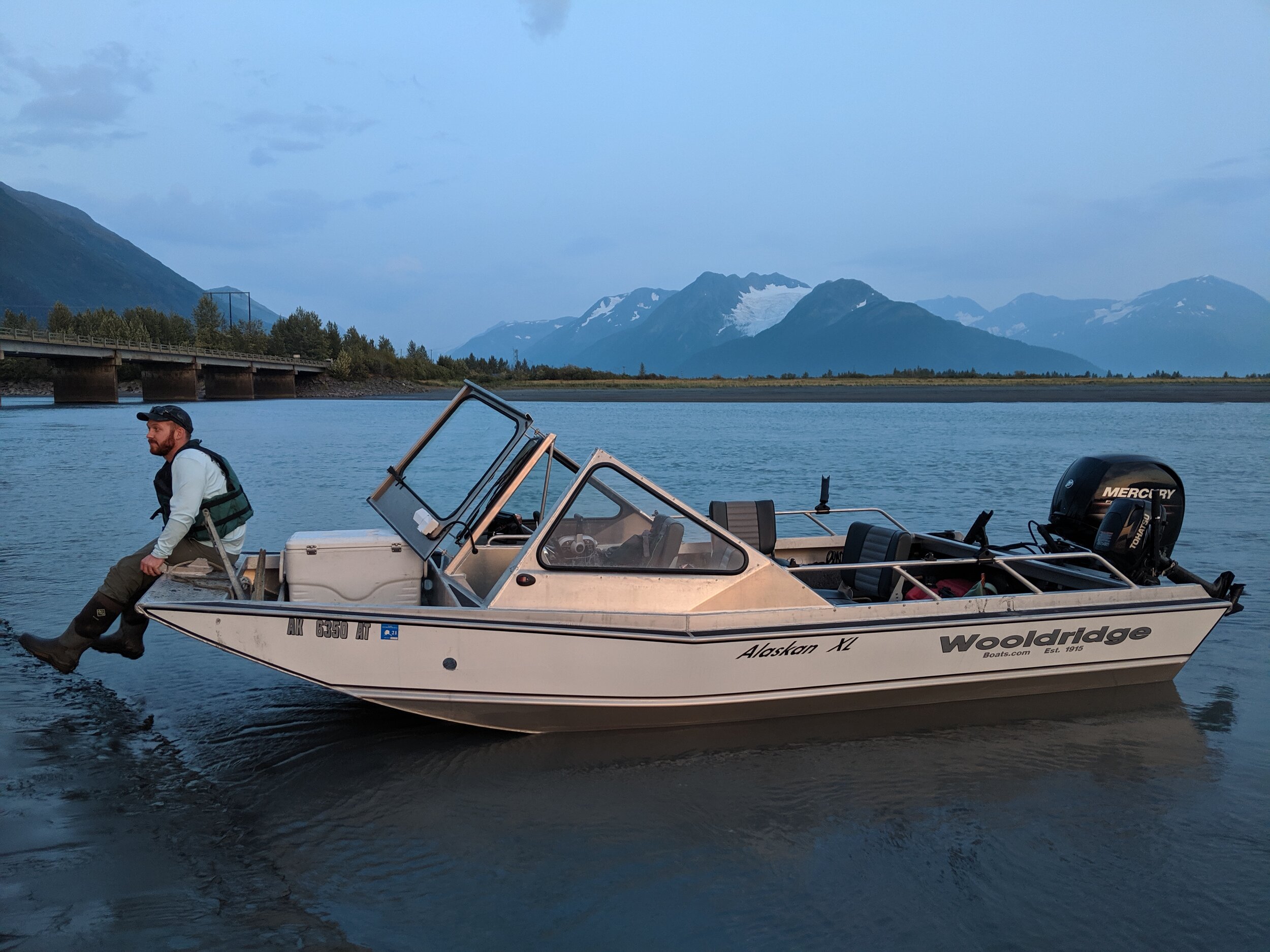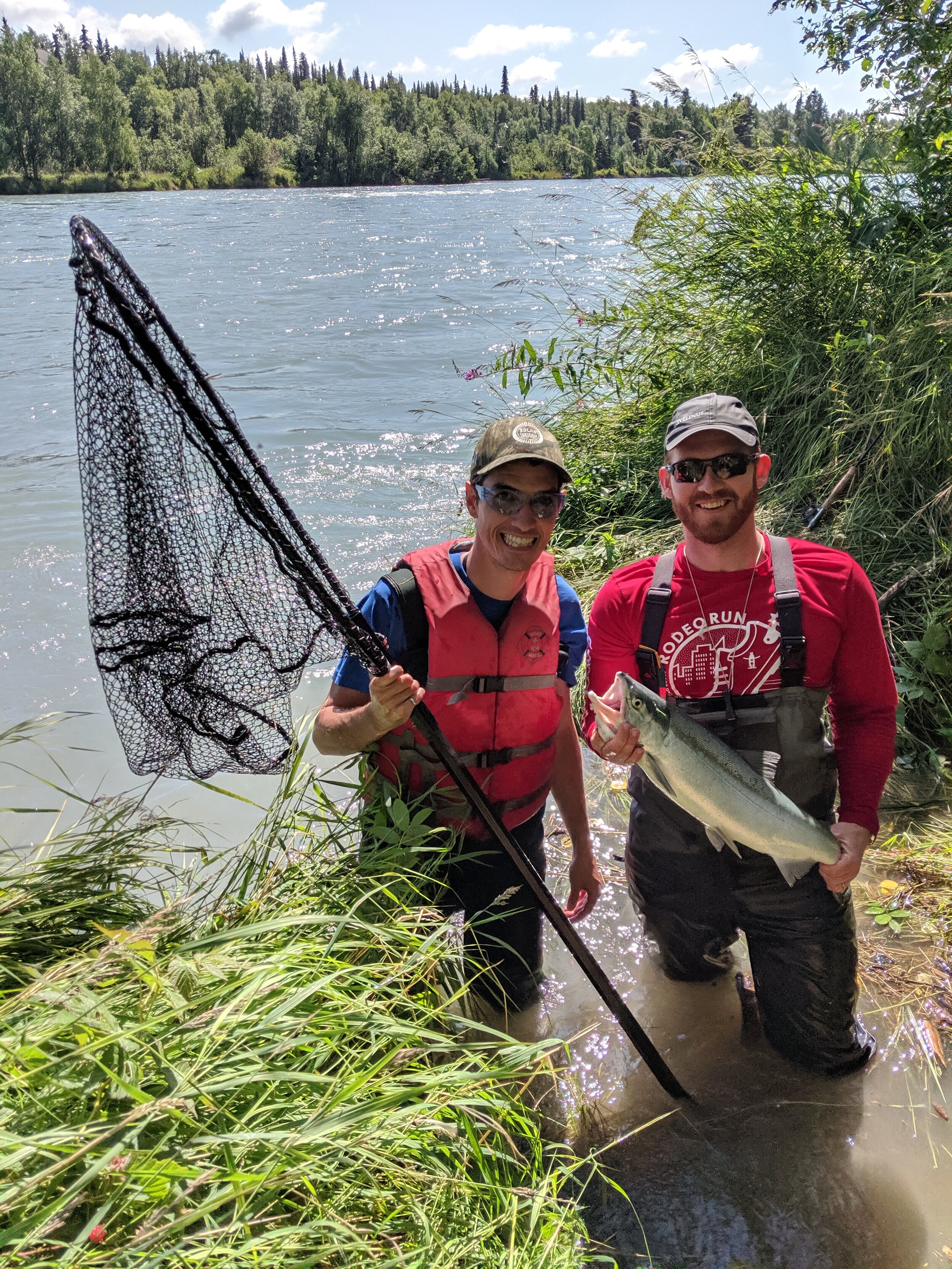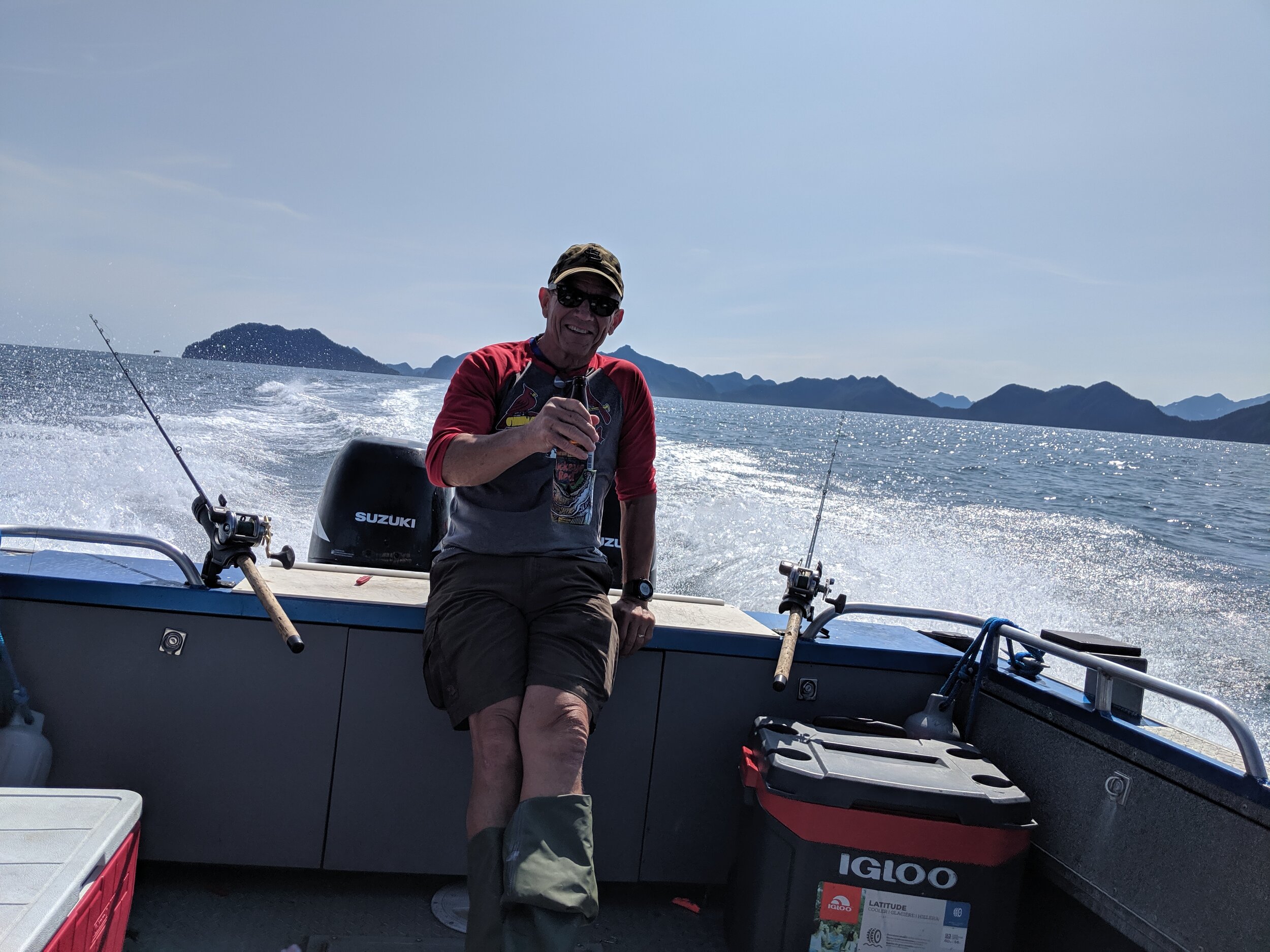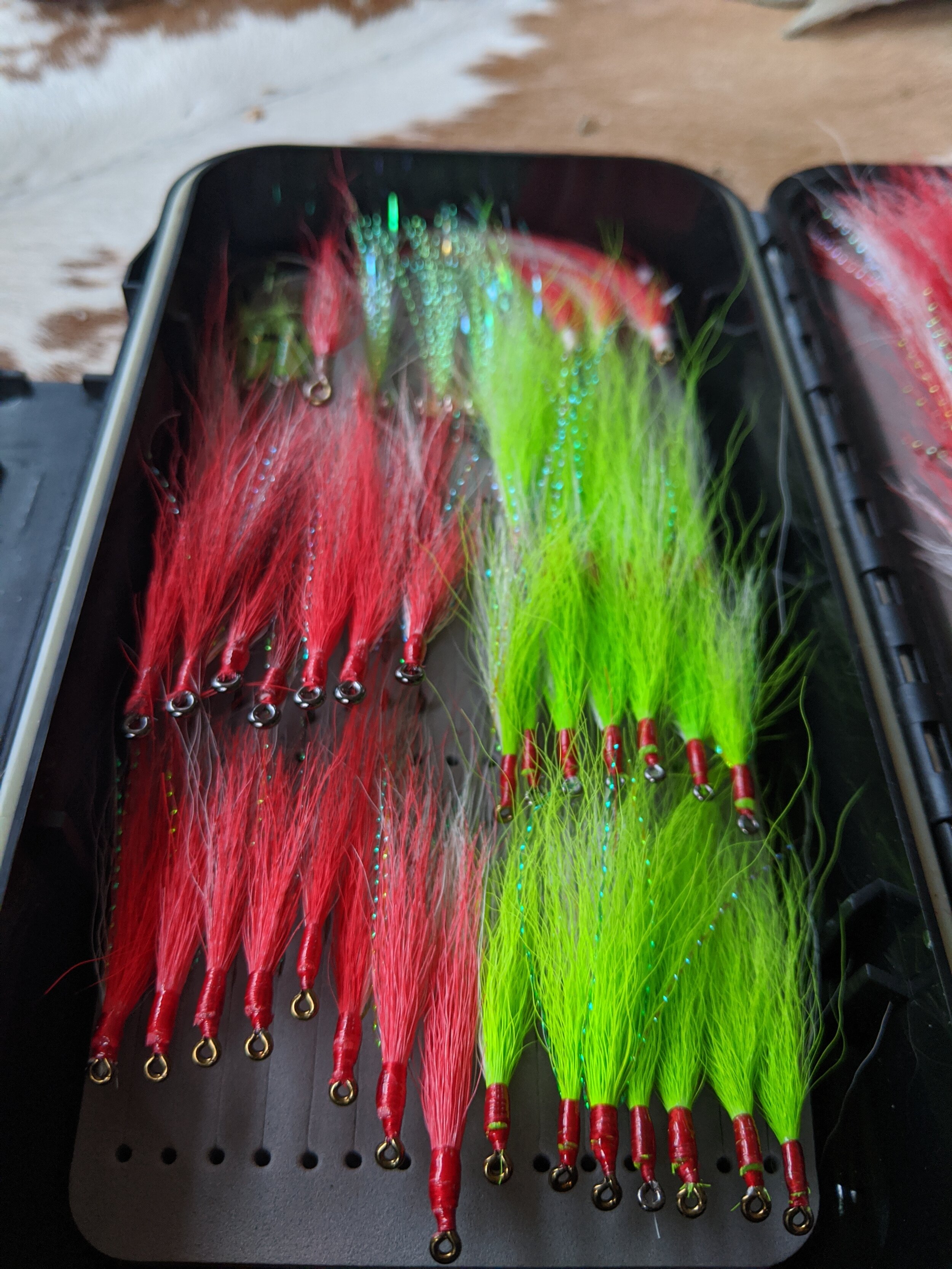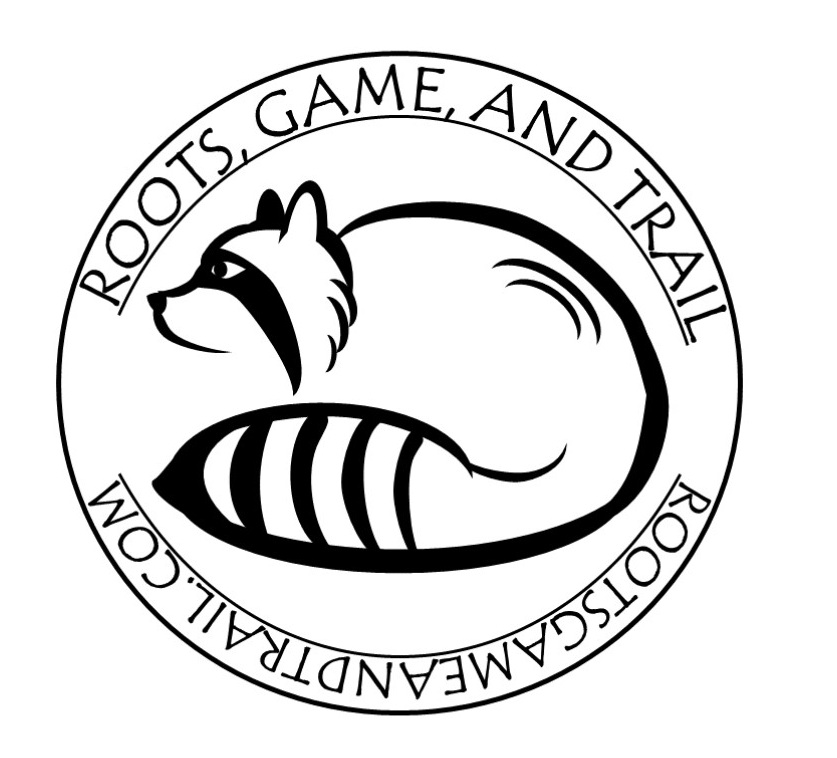Just How Fishy Are You?
Back in the early summer of 2018, my wife, Jerissa, and I moved to Alaska with prospects of new jobs and new adventures. We were just barely getting our outdoor whistles wet in Texas when we pulled roots and drove north. We struggled to leave the people of Texas and its wilderness so unexplored, but we were optimistic about the promise of the Alaskan wild. After all, it is the land of dumpster-diving bears, neighborhood moose, chihuahua-hunting lynx, and the elusive twelve-pound trophy trout.
At the end of my first week in the midnight sun, I walked into the “Purist, Dry Fly or Die” shop. I moseyed about the shop, admiring the wide array of fly patterns. Rods and reels lined the shop’s walls, varying as much, if not more than the fly patterns: Shorties for densely forested mountain streams or long speys for the wide, monster-fish rivers; light tackle for the six-ounce grayling or heavy for the sixty-pound king salmon.
I idly watched as some locals dropped in to supplement their tying material, pick their flies, and chat with the owner. After I watched the owner go a couple of rounds in the social ring, I found my chance to jump in. I introduced myself and conceded that I was new to Alaska but excited to learn about Alaskan fishing. During my pitch for his local know-how, he sniffed for my elusive fishy smell. He dissected each of my answers, searching for my dedication to the righteous fly fishing cause. He must not have found what he was looking for; I was met with his seemingly standard negativity.
“Everything is blown out, and the water is too high to fish,” he lamented. “Besides, the tourists are filling up the waters, and the guides have been booked for weeks. You won’t find many good spots to fish until August.”
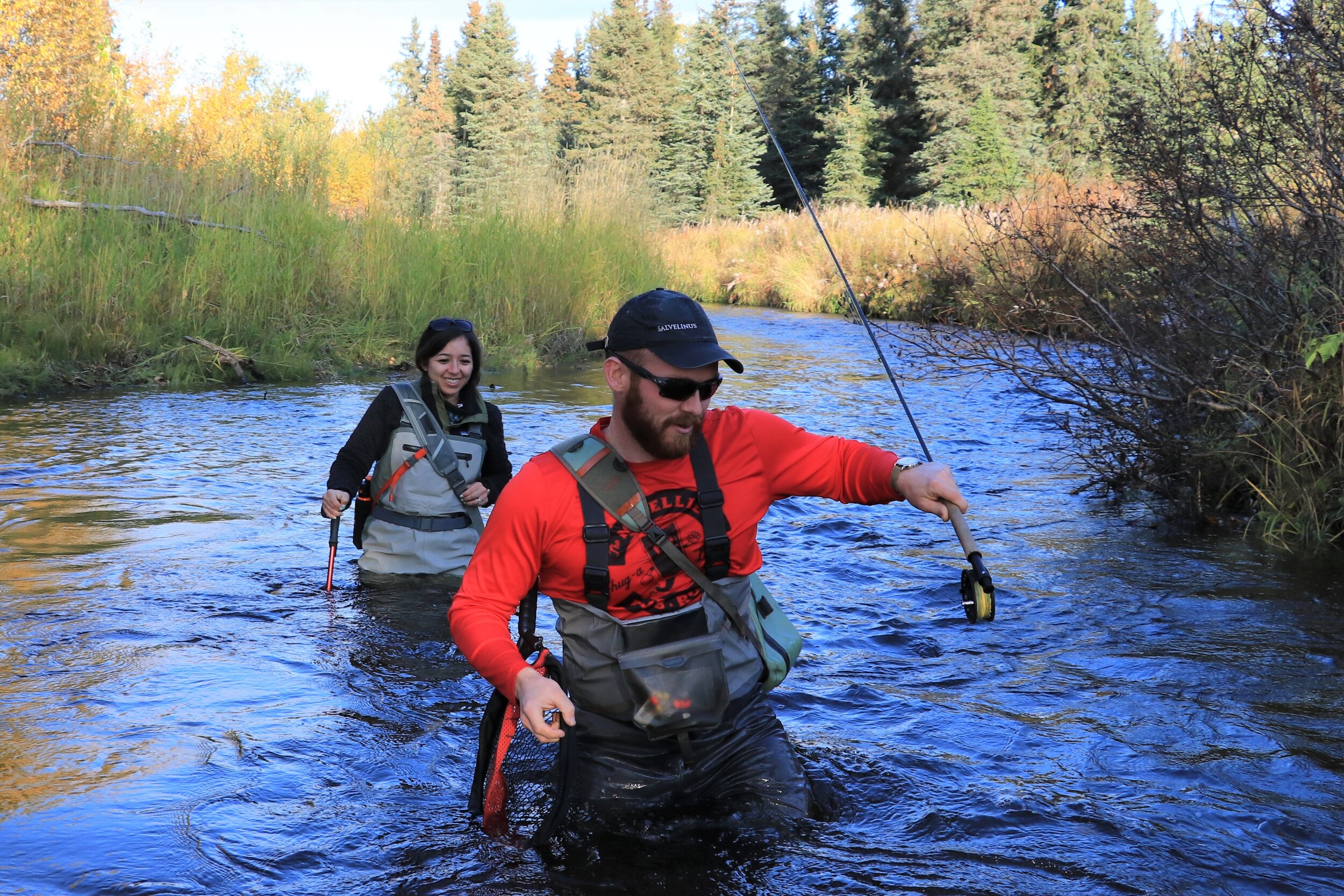
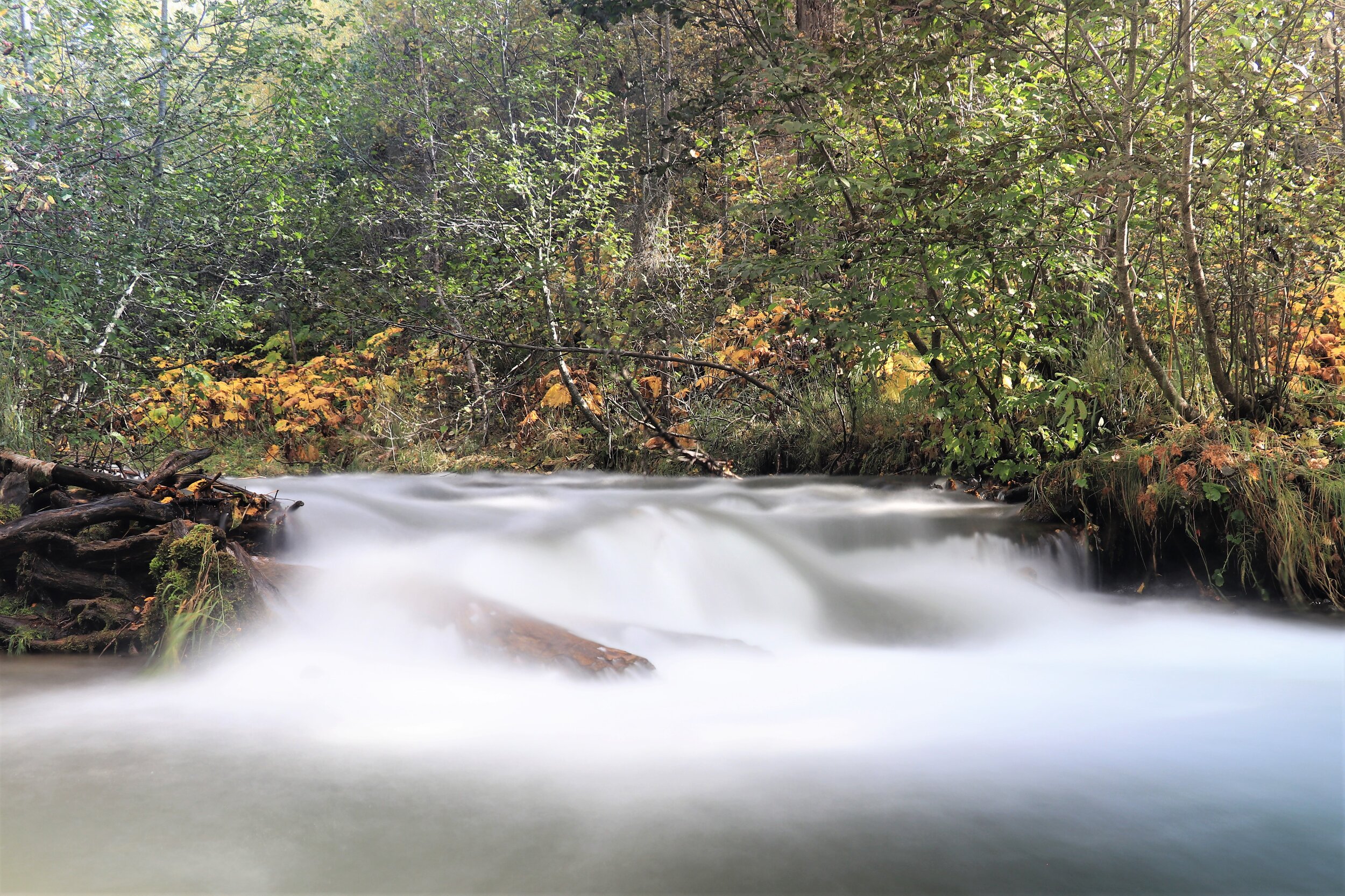
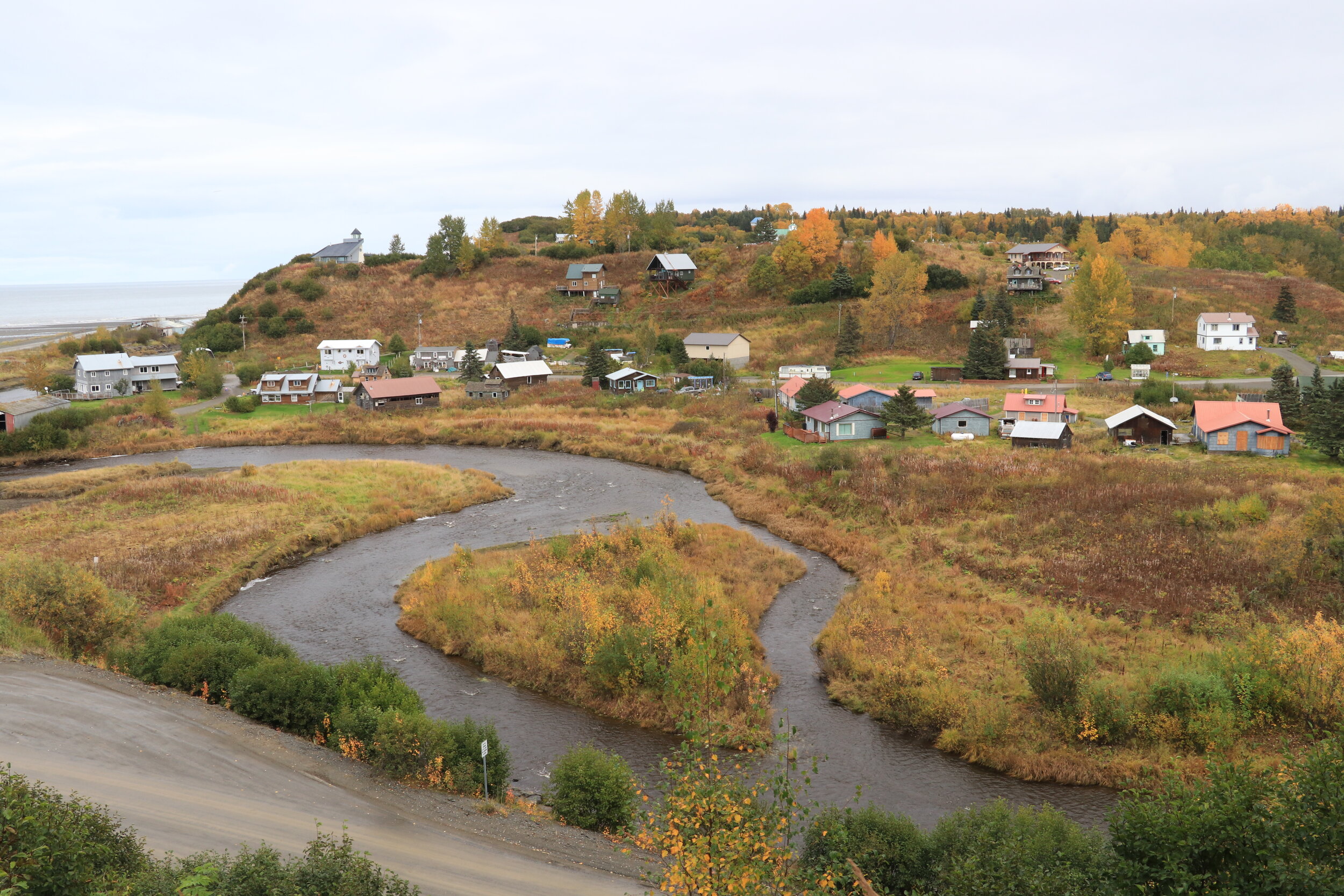
His pessimism knocked me back. I wondered how there was such a short window to fish in Alaska for as much allure as the last frontier has; it brings in hundreds of thousands of nonresident fisherfolk a year. After dropping a pretentious poop in my punch bowl, he must’ve realized his faux-pas as he shifted the conversation toward fishing for red salmon, the only fish that were really “biting” at this time of the year. He then generously taught me that, contrary to popular belief, red salmon do actually hit flies. “Don’t let those snaggy types tell you otherwise,” he proudly boasted, adding that the red salmon can actually be a sporting fish on a fly.
Fishing for red salmon while shoulder-to-shoulder with your fellow fishers has become known as “combat fishing” in Alaska. The red salmon swim upstream but are no longer interested in food; they have one objective, spawn! This annual migration brings out all shapes and sizes of anglers, forcing people to rub elbows when they normally wouldn’t. It fosters atypical comradery, ridiculous arguments, and unceasing debauchery. While it is not a terribly serene form of fishing, it has its merits, but as you might imagine, it is polarizing.
The owner then recommended that I check out his Killer Kenai Shrimp pattern in the fly display, meant to emulate a crustacean the salmon eat while in saltwater. Right as he pointed me in the fly’s direction, his buddy walked in, and I could sense the owner’s relief.
Without any advice on where to fish, I retreated to the safety of structure, the fly display. I aimlessly observed each fly pattern, finding leech patterns, shrimp patterns, sculpin patterns, shad patterns, baitfish patterns, crawfish patterns (what? In Alaska?), and the Sharps Model 1874 of flies, the woolly bugger. I stared at the woolly buggers, relishing its familiarity and comfort. It was a staple of my fly boxes when fishing for warmwater species in Texas.
There were some recognizable and some foreign varieties--rubber legs, wire, bead chain eyes, lead eyes, plastic eyes, purple, wine, electric blue, olive drab, black, burnt orange, chartreuse, two-tone. I stared blankly at the woolly buggers, still clueless as to what might put me into a salmon or native 30-inch trout, let alone a stocked rainbow on a lake. I was fresh into my immersion into fly fishing, barely competent at pursuing the warmwater fish of my Texan home and not sure I was ready to match the Alaskan hatch. Even still, I figured I should buy a couple of buggers because they were so damn pretty. Maybe I really was starting to become a fly fisherman.
I failed to mention earlier that my wife and I stopped at the fly shop after an investigatory trip to Costco. We wanted to see if we really needed to bring up that case of appetite-pleasin’ Ranch-Style Beans from Texas (turns out there are cargo ships that come to Alaska a couple of times a week from Seattle; we were safe). “We” is the key here. All during my uncomfortable encounter in the fly shop, Jerissa was patiently waiting in the car. She knew I wanted to get in the water and fish, and she could tell just how antsy I was. We were both dealing with adversity, only in different ways.
I circled the shop’s single fly display like a fresh stocker rainbow trout, wondering what and if I was supposed to bite. A few more groups entered the shop, mostly tourists ready to drop coin on flies or something else to support the local fly shop. Eventually, there weren’t any more customers or buddies to keep the owner busy, and he knew what was coming. The slimy bottom-feeder hadn’t left; I was still lurking among the rabbit furs and bucktails. I had a small pack of flesh-colored rabbit zonker strips in hand to prove my capacity to pay and not freeload. I emerged from the depths of the fly display and approached him with a conciliatory question.
“Is there somewhere I can learn more about how or where to fish?”
I wasn’t trying to dismiss him as he had done to me, and I shouldn’t have been so apologetic. He restated that all his guide buddies were booked, but some new guide dropped off a few cards if I wanted to try him out. He hadn’t fished with this newcomer before, but he seemed okay.
About this time, another one of his buddies walked in for some coffee, and I was quickly passed off to him. His buddy sat down on a stool to the right of the counter and sipped his coffee while we made small talk. He was polite enough, but that didn’t stop him from cordially feeling me out. The obligatory interrogation ensued.
“Where are you from?”
“What did you fish for there?”
“Have you been down to fish for reds out of Corpus Christi where the water is actually blue?”
“What flies were you using?”
He had fished in Texas a few times when living further south, just in the saltwater along the coast. He told his story of sight casting to tailing reds, and I returned the enthusiasm. However, the conversation quickly faded when I mentioned my pension for ditch fishing, with spinners and flies, for panfish and three-eyed catfish. In the end, he pointed me to the Roadside Angler’s Guide to Alaska and turned back toward the owner. I grabbed the rookie guide’s card, bought the guidebook and zonker strips, and walked out with pits soaked in nervous sweat. Feeling cautiously optimistic about my Alaskan fishing prospects but still no closer to them, I sat down in the car next to Jerissa. She awoke from her light, boredom-induced nap and enlightened me on how long I had been in the shop--fifty-three minutes, but who’s counting in marriage?
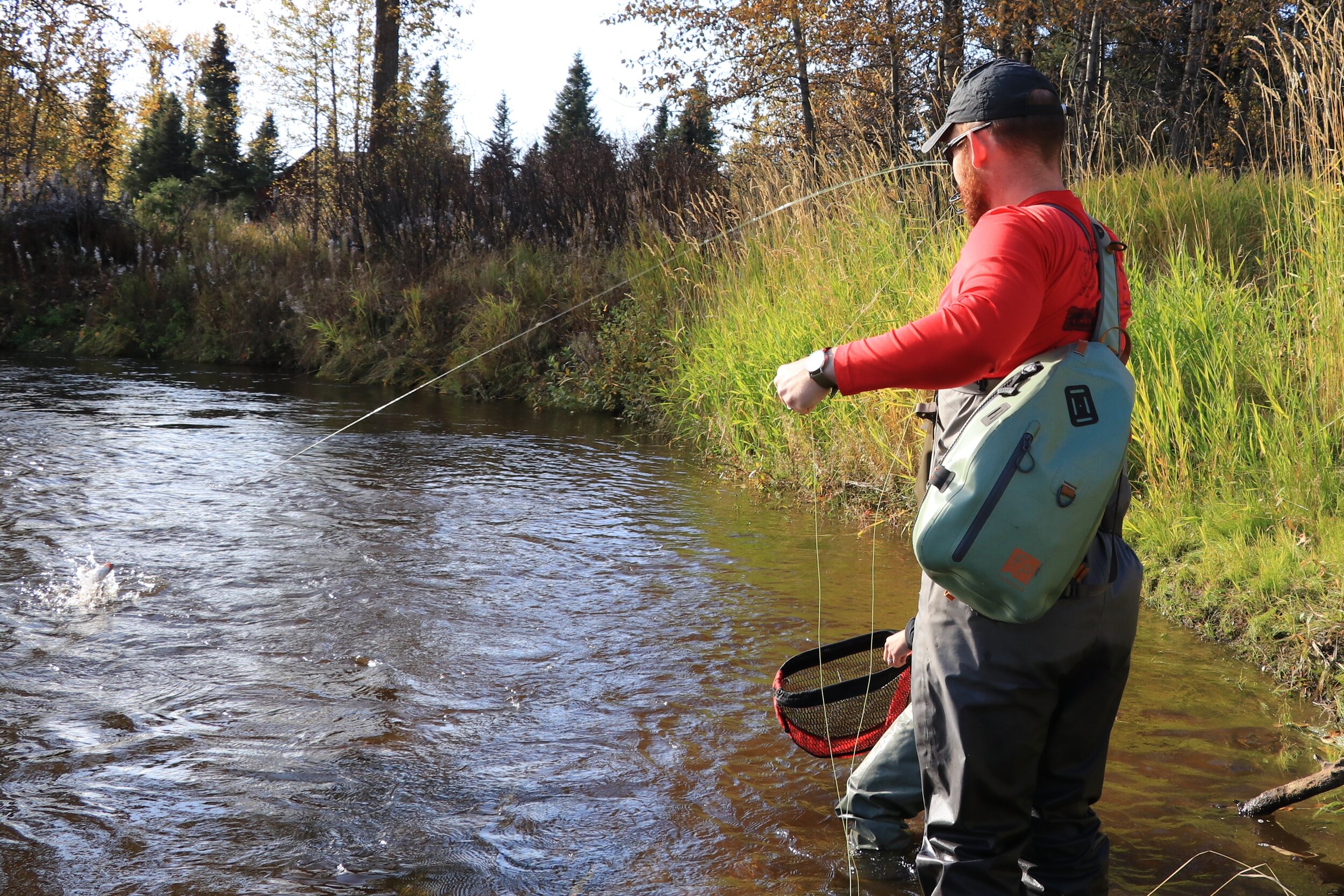
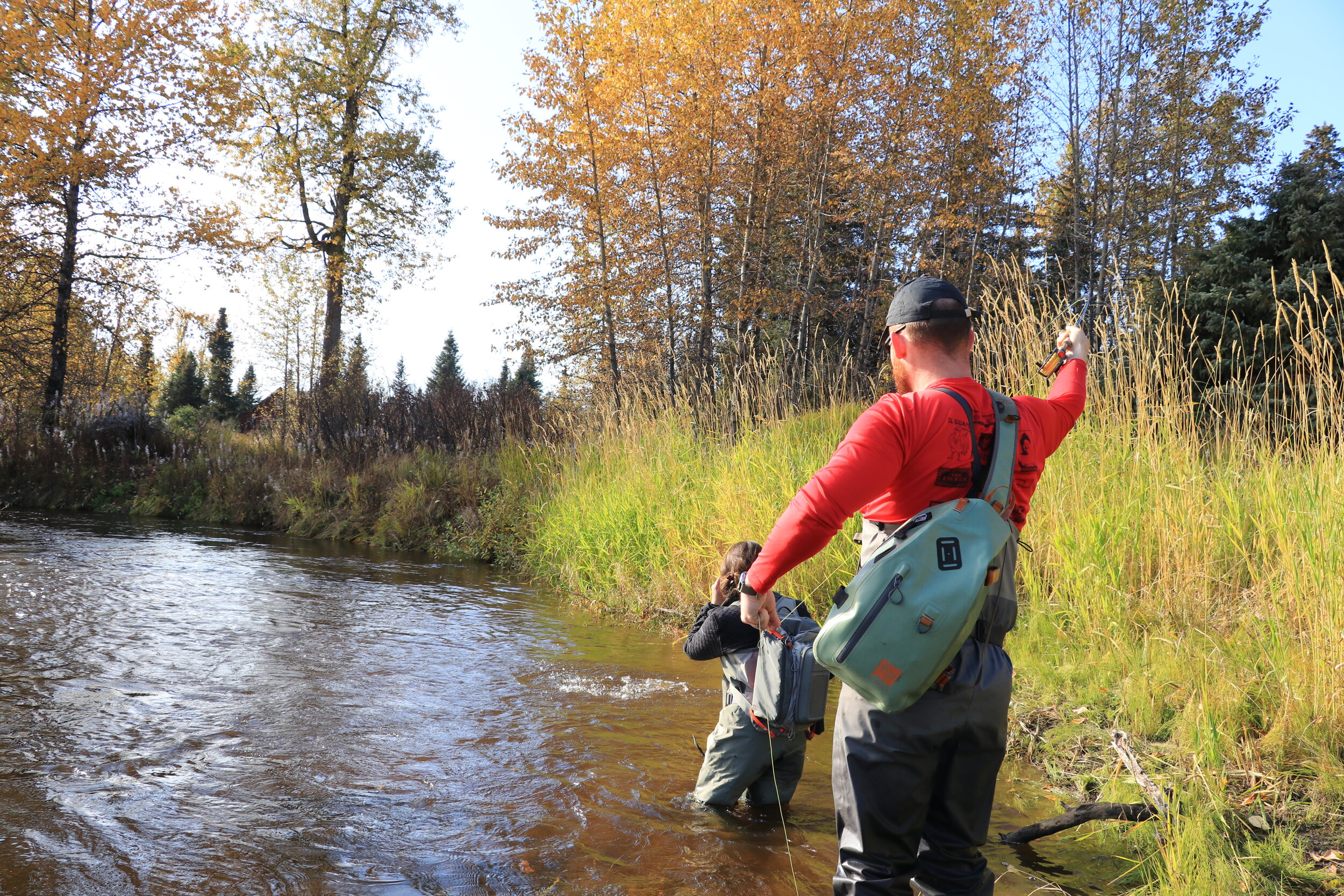
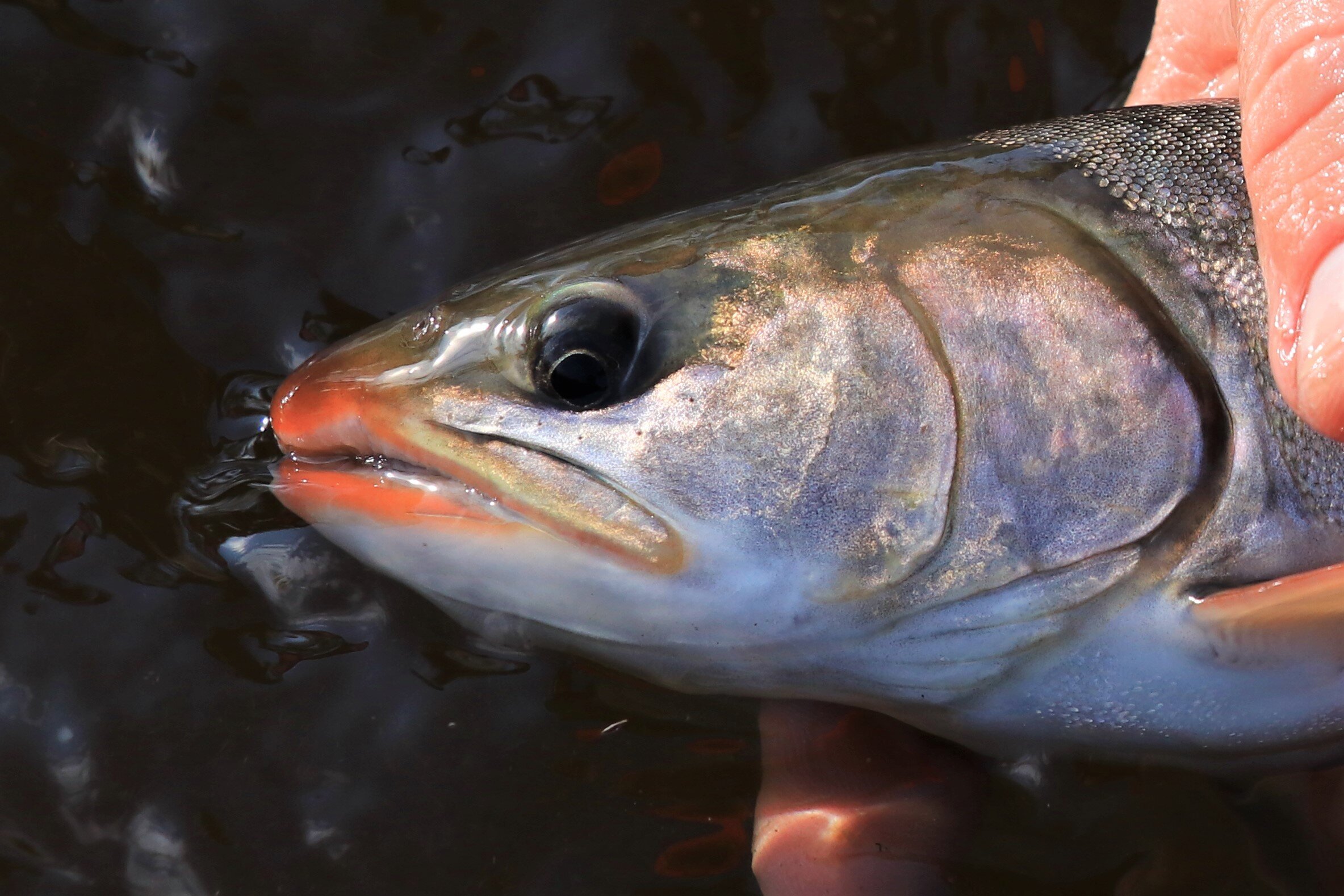

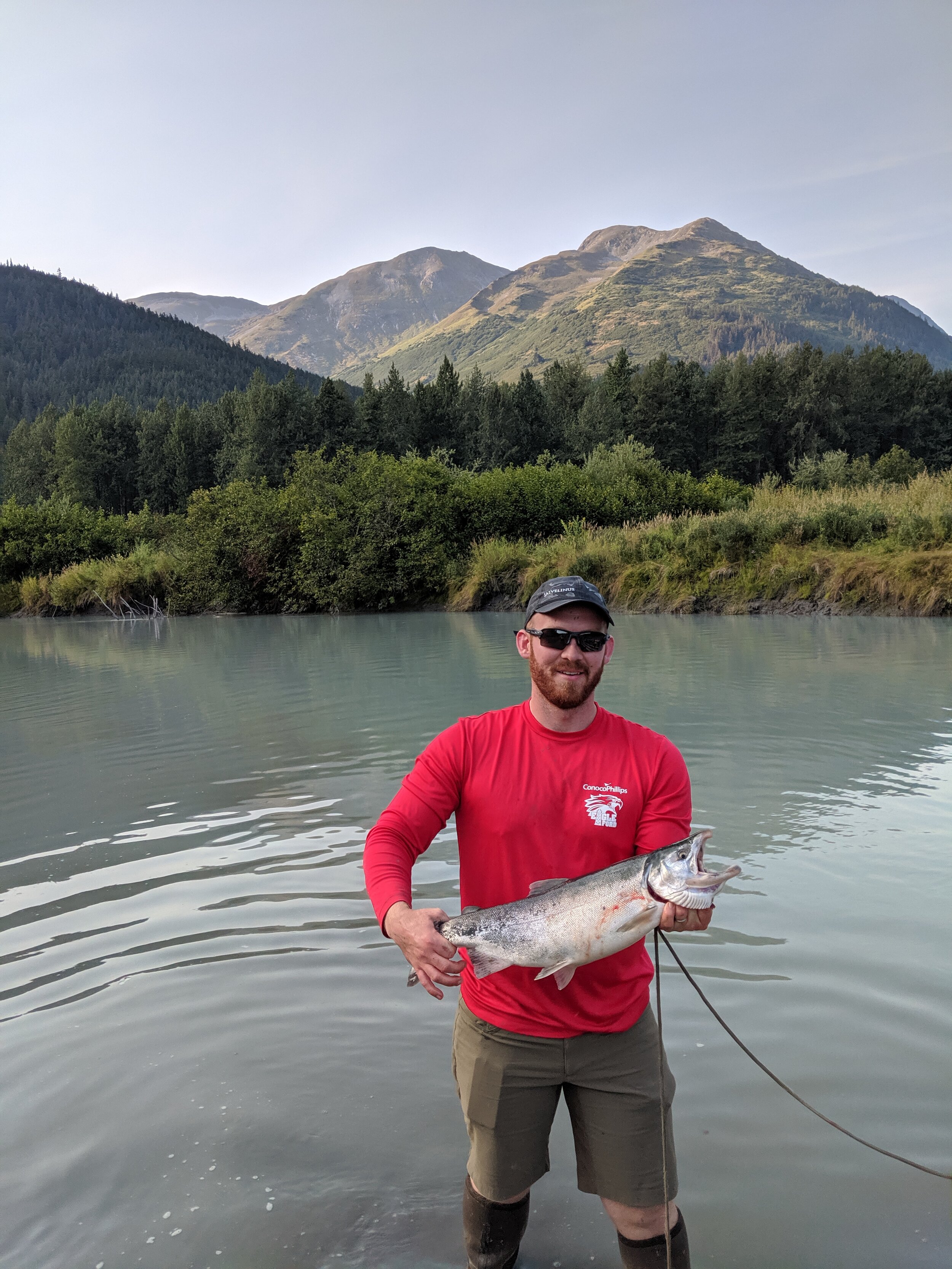
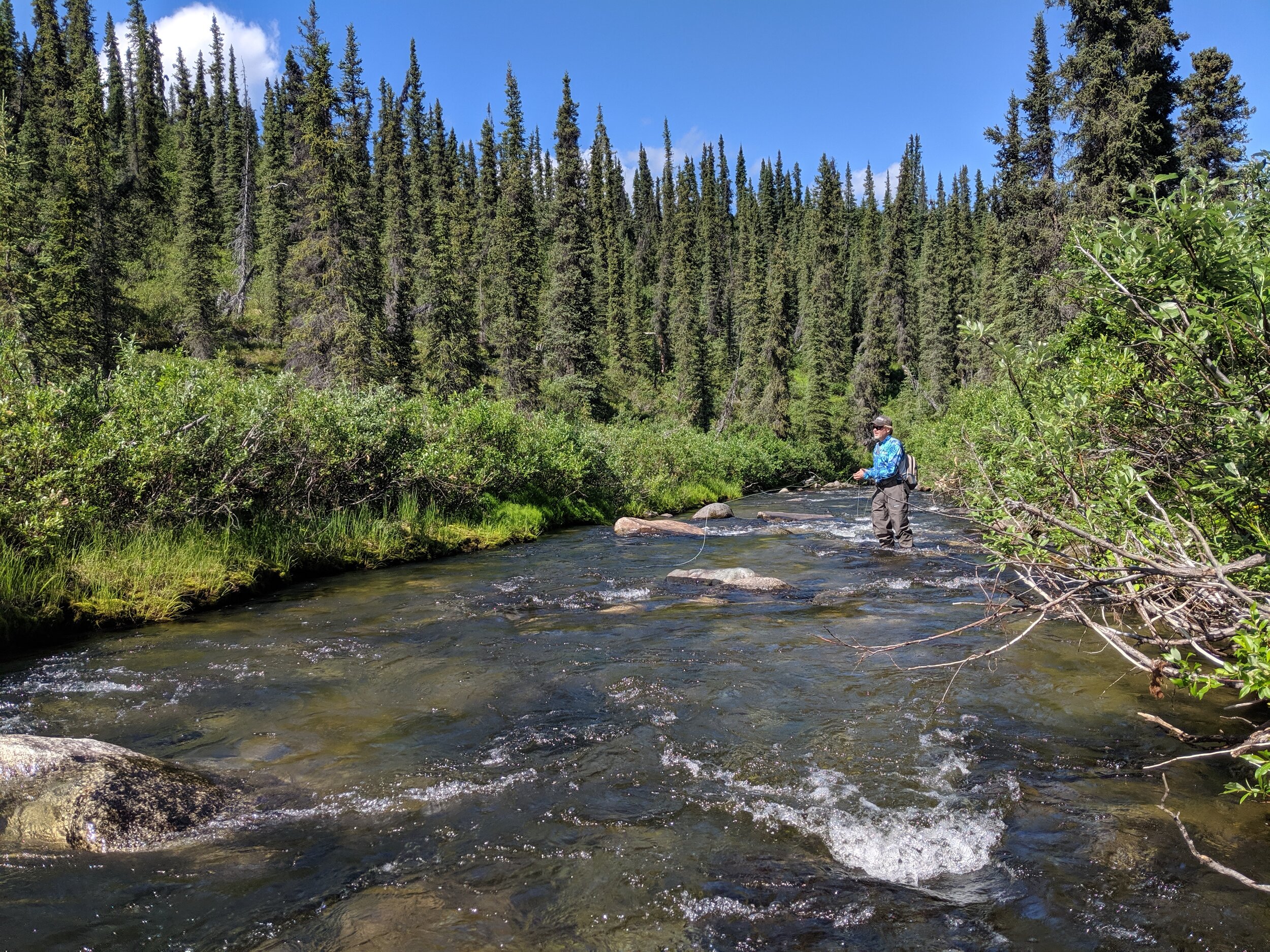
A day later and alone, I happened to be next to the “Alaskan Outdoors Shop with Fly Stuff” while stopping at Lowe’s for some new-to-town honey-dos. As soon as I entered the store, a towering, eight-foot-tall polar bear stood in my path, greeting me with lips agape. To my left, I passed a rack of rods with a hand-written sign reading “SALE”. The rack contained a varying mixture of spinning rods, fly rods, and casting rods. Just past the rods, the ubiquitous rack of long guns laid full of rifles and shotguns, safely pointing toward the roof with action open. I then looked down the counter in front of the long gun racks, and my eyes grew wide at the sight of the “bear repellants,” ranging from a 10mm semi-auto Glock to a five-round .45 magnum revolver. As my eyes moved up from the impressive handgun display, I found myself staring straight into the eyes of a young man, who had been standing in between the gun displays the whole time. I continued to stare, embarrassed that I hadn’t noticed him before, but he was unphased and immediately started talking with me, asking me how I was and if there was something he could help with. I told him of my family’s recent move and our eagerness for Alaska’s wilderness. Without my prompting, he dove straight into the details of his morning’s fishing excursion, including how he plucked a few red salmon from a Kenai stream and tickled a few unsuspecting rainbows in the process. He shared all the info he had, showing me not only the flies he used and the variety of options, but also where on the map he fished, some rivers to try out, and the access points to wade in.
Was he welcoming me in? I couldn’t believe it! He pointed me towards a fly display case full of nymphs and streamers for rainbow trout. I even saw those damned woolly buggers and reluctantly asked how they do. “Great,” he gloated, “they swing just fine.”
He then showed me how to tie a red salmon fly in 30 seconds. It’s about as benign of a fly as it gets; it’s a tuft of deer hair lashed to a hook--tier’s choice for color. I personally like chartreuse or red on top of white because I already bought those color bucktails for other flies. If you’re trying to imagine what it looks like, you’ve probably got it right, no matter what you’re visualizing.
I was totally consumed by his wealth of knowledge but started to remember what the other shop had mentioned about the local waters’ seasonality. I prepared myself and asked how long this good fishing lasted. He smiled and said (I’m paraphrasing here):
This early run of reds starts to die off near the end of June, but then the fun begins. There’s grayling, trout, and more reds in July; silvers, pinks, and chum start to show up around August. In August, the trout get greedy, and the sea-run fish come in to feast on the salmons’ ritualistic spawn. In September, the pinks have disappeared, and you have your chance for some later run silvers and the first real chance at steelhead. During all this time, you can always fish for northern pike toward Denali. They’re invasive, so we need to do our part to return the ecosystem to its equilibrium. You can fish steelhead and trout right up until the rivers freeze in November, then ice fishing season begins. From December through April, you can fish on the hard water--that’s ice for the Southerners--and on an unseasonably warm day, you can break out the fly or spinning gear and try for some resident trout and wintering steelhead in a few large rivers. By the time May rolls around, you can start to fish the lakes as they break up. The resident fish will be voracious. And we’re right back to where we started.
I blinked in astonishment; this dude had just told me that I could fish year-round!
Nervous memories of my previous experience with the “Purist” fly shop began to swim around in my mind. Why did that other shop have to feel me out for how fishy I was, according to their definition of fishiness? I could understand their guarded approach to inquirers, especially in a tourist town, but just because I am not very experienced in fly fishing for trout, I eat my catch, or I occasionally fish with conventional tackle doesn’t mean that I’m any less dedicated to the pursuit of fish. Aren’t we trying to take care of the fish and their environment, not our egos? It doesn’t feel fair to pick the winners and losers of the natural world based on our own imposed views of purity, especially when built on a social hierarchy with fly fishing at the top. Shouldn’t we welcome all methods of angling as long as they don’t harm the world that we share with the fish?
The feller at this shop got it; regardless of whether you use conventional tackle or a fly rod, or whether you fish hard water or the liquid variety, we all enjoy the art of angling and the environments where fish live. Collectively, we all want an abundance of wildlife to enjoy and have a vested interest in the environments that we fish, whether we ply the waters with feathers or plastics. Is there anything more vital than this?
As I talked with the guy behind the counter, I started to understand the hype and see why Alaska really is a land of vast fishing opportunity. All the waters that he talked about were an easy day trip from our house and even better if we made it into an overnighter. I wandered the store a bit more, bought some material for nymphs and hooks for red salmon flies, and walked out feeling awfully fishy.
This second outdoors shop became my main “fly” shop; it embraced the concept of celebrating the fish, the environment, and the adventure, rather than the method by which someone angles the fish. After all, whether tied like a fly, attached to a spinner, or loaded with bait, hooks probably feel about the same from the fish’s perspective.
